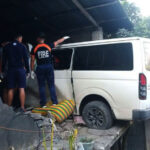The Philippines’ most active volcano, Mayon, has reportedly started spewing lava down its slopes, causing concern as volcanic activity intensifies in a region inhabited by tens of thousands of predominantly impoverished farmers.

Over 13,000 individuals have been compelled to evacuate from the impoverished farming communities located within a 6-kilometer (3.7-mile) radius of Mayon Volcano’s crater, following a surge in volcanic activity last week.
According to Teresito Bacolcol, director of the Philippine Institute of Volcanology and Seismology, the high-risk zone around Mayon may be expanded if the eruption becomes violent as the volcano started to expel lava on Sunday night. According to Bacolcol, in the event of such an occurrence, individuals within an expanded danger zone must be ready to evacuate to emergency shelters.
Despite the long-standing declaration of the permanent danger zone below Mayon as off-limits to people, there are still residents who choose to remain in the area. It is worth noting that this region has been home to generations of farmers and families who have no other place to call home. However, the exact number of individuals who continue to reside in this hazardous zone remains unspecified.
“What we are seeing now is an effusive eruption,” Bacolcol told The Associated Press news agency. “We are looking at this on a day-to-day basis.”
During a press briefing on Sunday, Health Secretary Teodoro Herbosa warned of a health risk associated with being in close proximity to the eruption. According to Herbosa, inhaling sulphur dioxide gas or the particulate matter of ash-falls can pose a concomitant health risk.
According to reports, the alert level for the volcano in the Philippines remains at three on the country’s five-step system. This indicates that there is a possibility of a hazardous eruption in the coming weeks or days.
In Albay province, the famous tourist spot Mayon volcano has prompted the declaration of a state of emergency on Friday. The move aims to expedite the allocation of disaster relief funds in case of a significant eruption.
The Philippines has 24 active volcanoes, including Mayon. In 2018, tens of thousands of villagers were displaced as a result of its violent eruption. According to reports, over 1,000 people lost their lives when Mayon erupted in 1814, burying entire villages.
The archipelago, which is situated on the Pacific “Ring
of Fire,” experiences approximately 20 typhoons and tropical storms annually. This region is known for its high concentration of seismic faults, making it a hotbed for earthquakes and volcanic eruptions worldwide.






